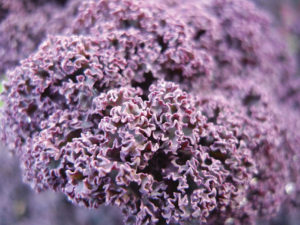| Good news travels fast, so you’ve likely heard by now kale is a super-vegetable that is high in vitamins, minerals, fiber and antioxidants. Kale is an exceptional ingredient with real health benefits and a tasty flavour. The nutrient-rich facts are true and there is no better way to eat kale consistently than to grow your own, easily accessible plants.
From the home gardener’s stand point, kale is highly regarded for its ability to yield during cooler temperatures. Fresh-from-the-garden vegetable options drop off when the heat of summer begins to fade, but kale continues to grow and actually becomes more robust in flavour.
To grow kale in the garden
Place each plant 12 to 18 inches (30to 45 cm) apart in a sunny location, where it will receive over six hours of direct sunlight. Enrich the soil with compost or a slow-release vegetable fertilizer prior to planting. Provide kale plants with a consistent supply of water each week. When given proper care, a kale plant yields even more tender and flavourful leaves.
For kale grown in colder areas, you may extend the harvest season by taking additional cold protection measures, such as applying a thick layer of mulch around the plants or covering the plants with row covers. Once a kale plant produces yellow flowers, also known as bolting, it is a sign the plant is done producing for the year, and it should be removed from the garden.
To harvest kale
Cut off the leaves from the plant as they are needed. Do not pick the top center of the plant, this area is necessary for the plant to continually renew leaves faster. Smaller tender leaves are ideal for salads, while older leaves are perfect for cooking.
To store kale
Put the unwashed leaves in an air tight container in the refrigerator, where it stores well for up to seven days. To freeze your garden kale for future use, follow these steps. First, wash the greens and remove the central rib (removing the rib is optional). Next, boil the greens for three minutes, then immediately plunge the kale into ice water for three minutes. Drain the greens thoroughly and store in re-sealable storage bags, removing as much air from the bag as possible. |
|

The foliage of some varieties, like Redbor Kale, have distinct purple foliage.

Kale can survive frost, but snow will stop it.
|
